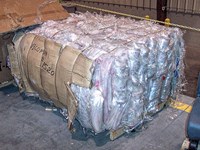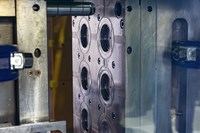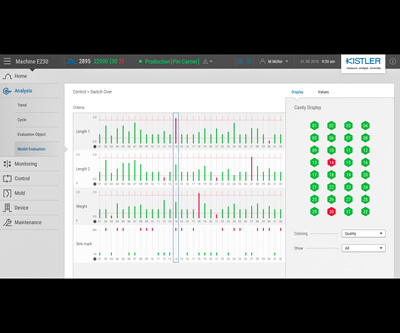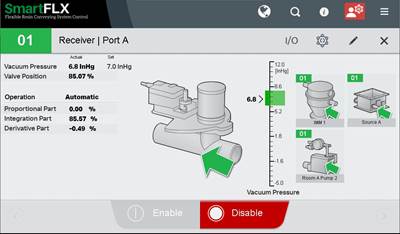Art or AI?
Is AI a tool that humans can use to increase their efficiency or a replacement for them altogether?
The email subject line reads, “New Articles Posted for Teams You Follow.” The girls varsity soccer team at my daughter’s high school is into the third round of the state playoffs, and the app I downloaded to track the schedule and scores is offering me a preview of the team’s upcoming playoff match.
The article has all the hallmarks of a game preview: recent performances, including standout players; historical matchups against the upcoming opponent; and pertinent team and individual statistics. It even has a byline, but it’s that byline which tips the readers off that something about this preview is different. “Team Reports” is listed as the author, and a note at the bottom of the copy informs me the story was “generated by infoSentience” based on data entered into the team tracking app.

On its website, infoSentience promises to “build a report in seconds exploring any aspects of your data” so that users can “sit back and let AI surface the compelling information you need to know.” The infoSentience’s website challenges visitors to play “spot the bot” where it places AI-generated content next to a human text and dares humans to distinguish between the two.
In the future of computer-aided engineering, will the “aided” go away, leaving just “computer engineering”?
Over consecutive weeks this spring, I attended user group events for Autodesk’s Moldflow and CoreTech System’s Moldex3D injection simulation software. As with virtually anything these days, artificial intelligence (AI) figured heavily in the companies’ future plans. In simulation, however, perhaps more than in many spaces within plastics processing, AI holds particular promise as a means to automate certain tasks.
In various presentations, Moldex3D talked about how AI can consider past designs and simulations when assessing new ones with similar features. Where it might take a person thousands of hours to review 100 or 200 designs in search of similarities, AI can do that nearly instantaneously and provide a summary and recommendations. Anthony Yang, chairman and president of Moldex3D North America, encouraged attendees to use AI “to activate knowledge” and access the institutional knowledge of a company.
Hanno van Raalte, product manager for Moldflow, said much of his company’s focus on AI also considered automation of tasks and sought to make difficult and error-prone work easier. An additional research project is examining surrogate models to accelerate solution time.
Simulation, of course, falls under the broader concept of computer-aided engineering or CAE — software and hardware that are utilized as a tool by human engineers in fields like design. In a famous interview, Apple’s Steve Jobs said it was his belief that what separates humans from other animals was the species’ ability to create and use tools. While most animals, on a relative basis, move more quickly and efficiently than humans, a human on a bicycle — a tool it devised — could eclipse them all. For Jobs, the computer represented a bicycle for the mind — a human-created tool that greatly boosts the brain’s efficiency.
Over lunch at the Moldex3D event, an attendee whose company provides simulation consulting services wondered aloud about the future of computer-aided engineering and whether the “aided” might go away, leaving just computer engineering. His conclusion, however, is that a portion of the work he does remains an art and, at least for now, only humans, not computers, can be artists.
Linhuo Shi, who manages CAE at automotive supplier Toyoda Gosei, said in a presentation at the event that AI will undoubtedly make inroads in a variety of areas and make CAE more efficient but whether AI would replace humans in the CAE process he asked the audience to consider autonomous vehicles. From 0 to 5 there are six levels of autonomy, from fully manual (0) to fully autonomous (5). For level 5, apart from starting the system and setting the destination, there is no human intervention, but for a safe drive, a completely clear road with “no surprises” is required, Shi says. Life, however, including injection molding simulations, is, of course, full of surprises.
A strength of local newspapers at one time was coverage of high school sports, and it was in that field where I started in journalism. The auto-generated reports on local games that the aforementioned app pumps out, at first blush, look like articles you might have read in the local paper, but on further examination, they lack the color, context and depth that a human reporter would imbue.
AI will no doubt play a role in plastics going forward, but I believe it will be as a tool making the people at the heart of the industry more efficient, not as a replacement for them.
Tony Deligio
Related Content
Scaling New Heights With Vertical Integration
Eden Manufacturing was founded on a vision of vertical integration, adding advanced injection molding capabilities to a base of precision moldmaking and more recently bringing Swiss-type machining capabilities in-house.
Read MoreICIS Launches: Ask ICIS Generative AI Commodities Assistant
Said to be the first of its kind, this AI assistant will enhance access to ICIS’ intelligence and insights for the energy and chemical markets.
Read MoreProcessing Megatrends Drive New Product Developments at NPE2024
It’s all about sustainability and the circular economy, and it will be on display in Orlando across all the major processes. But there will be plenty to see in automation, AI and machine learning as well.
Read MoreNPE2024 Wrap-Up: Sustainability Dominates Show Floor News
Across all process types, sustainability was a big theme at NPE2024. But there was plenty to see in automation and artificial intelligence as well.
Read MoreRead Next
Injection Molding: Artificial Intelligence Predicts Part Quality
AI software “learns” via DOE the influence of process variables on part quality and applies that “learning” to make good/bad part determination in production.
Read MoreArtificial Intelligence Manages Changing Conveying Conditions
NPE2024: Billed as an industry first, controls autonomously adjusts the conveying system in real-time to move material under optimal conditions.
Read MoreConvergence of Design and Manufacturing
Clear lines between makers and designers have increasingly been blurred, with manufacturers often taking on tasks formerly in the realm of a design house, and designers asked to think about manufacturability in their napkin sketches.
Read More














